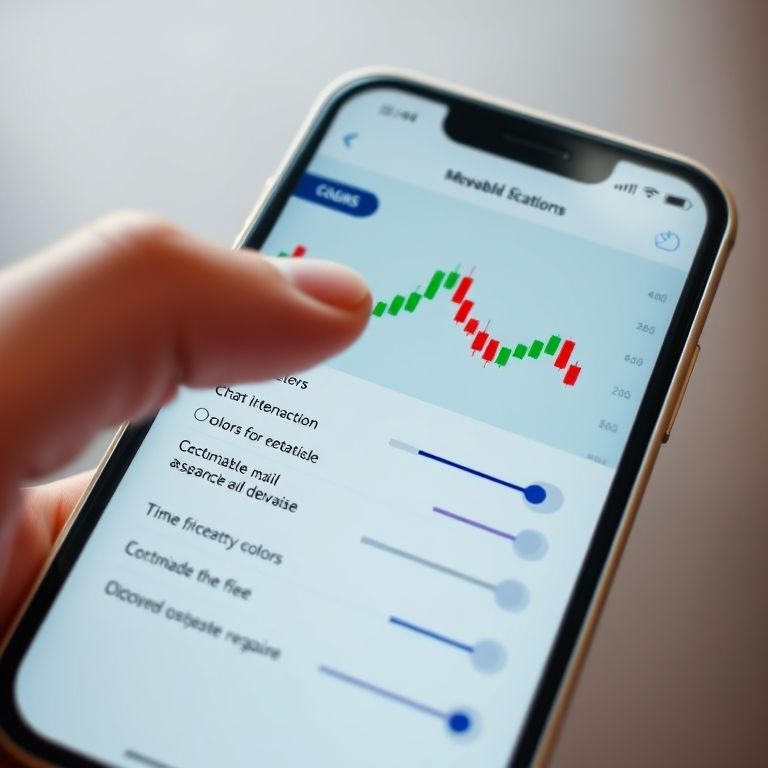How to customize charts in MetaTrader 4 for iPhone?
How to customize charts in MetaTrader 4 for iPhone?
Intro
Trading on the move means your charts have to work as hard as you do. With MetaTrader 4 on iPhone, you can shape charts into a personal decision tool—adjust colors, timeframes, indicators, and templates so that every glance tells you more about price action. This article walks you through practical customizations, shares quick strategies for multiple asset classes, and touches on the evolving world of DeFi, smart contracts, and AI-driven trading as context for prop traders aiming to stay ahead.

Body
Chart visuals and layout
- Make the view legible at a glance: switch chart types (candlestick, line, bar) and pick a timeframe that matches your style, from minute-by-minute to daily. A clean color scheme with a dark background and bright signal lines reduces eye strain during long sessions.
- Personalize grids and scales: tighten or loosen the grid, adjust the price scale, and use horizontal lines to highlight support and resistance zones. Small tweaks here speed up read-time when markets move fast.
Indicators and templates
- Add core indicators you actually rely on: moving averages for trend, RSI or Stochastic for momentum, MACD for divergence. On iPhone, you can drop these onto a chart with a tap, saving your preferred combination as a quick-access template.
- Templates save time across assets: once you find a setup that works (a specific indicator mix, color scheme, and chart type), save it as a template and apply it to other charts with one tap. This is especially useful when you’re toggling between forex, stocks, and commodities.
Timeframes, multiple charts, and quick actions
- Timeframe swaps should be fast: a couple taps to switch from 5-minute to hourly, helping you adapt as volatility shifts. Keeping a couple of favorite timeframes handy speeds decision-making.
- Arranging charts on the iPhone screen: open more than one chart if your screen allows, so you can compare assets side-by-side. Use the gesture controls to resize or switch between charts without losing your place in a trade.
- Drawing tools and notes: annotate price levels with trendlines and horizontal lines, then save your notes in a template. It’s handy for post-trade reviews or sharing rationale with teammates.
Asset classes and practical use
- Forex, stocks, crypto, indices, commodities, options: MT4 on iPhone supports a broad set of CFDs offered by your broker. Tailor each asset’s chart with a layout that highlights the most relevant signals for that market (e.g., momentum on crypto, volatility gauges on indices).
- Quick scenario: you’re monitoring EURUSD for a trend pullback and BTCUSD for a potential breakout. A template with two charts—one showing a moving-average crossover on EURUSD and another with a volatility band on BTCUSD—lets you skim both markets in a single glance.
Reliability, strategies, and risk
- Start with a demo or small live position to test how your chart setups translate into decisions under real-time conditions. Use risk controls—limit per-trade risk, set stop-loss levels, and keep a simple trade journal to track what your charts helped you see.
- Trading psychology and discipline: clear visuals reduce noise. If a chart setup no longer aligns with price action, save a new template and retire the old one. Consistency beats constant overhauls.
DeFi, trends, and the big picture
- DeFi and smart contract trading are reshaping liquidity and access. Decentralized exchanges offer new venues, but come with liquidity risk, slippage, and security considerations. For prop traders, the move toward cross-platform signals means treating MT4 charts as a complementary tool to on-chain analytics.
- AI and automation: expect smarter signal aggregation and semi-automated alerts. In the near future, you may see AI-assisted chart interpretation that helps you spot patterns faster, while smart contracts handle execution once your predefined criteria fire.
Slogans and takeaways
- “Chart your edge on the go—customize, monitor, act with MT4 for iPhone.”
- “From grid to signaled draw: your personal trader’s cockpit in your pocket.”
- Episode-ready tip: build two or three lightweight templates (one for trend, one for range, one for breakout) and switch as market conditions shift.
Conclusion
Custom charts on MT4 for iPhone turn price data into a more approachable narrative. By tuning visuals, indicators, templates, and layouts, you gain faster reads, steadier decisions, and a better handle on diverse assets. As DeFi, smart contracts, and AI-driven tools evolve, your mobile charting setup becomes part of a broader strategy to blend traditional technicals with emerging liquidity and intelligence—keeping you prepared for the next wave in prop trading.
YOU MAY ALSO LIKE




